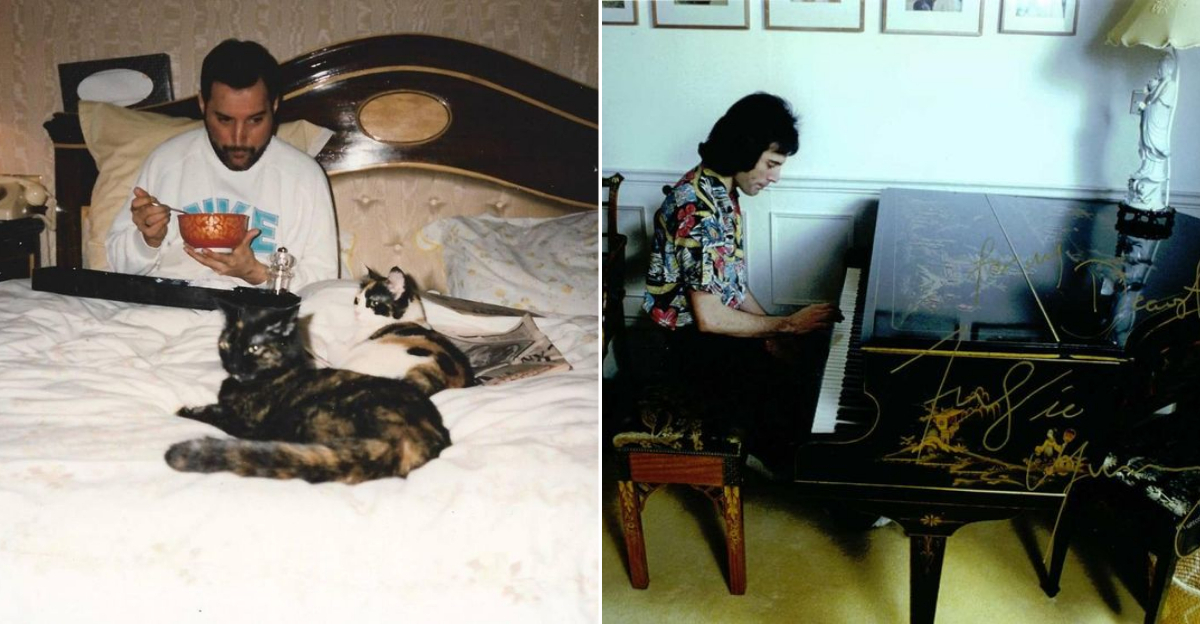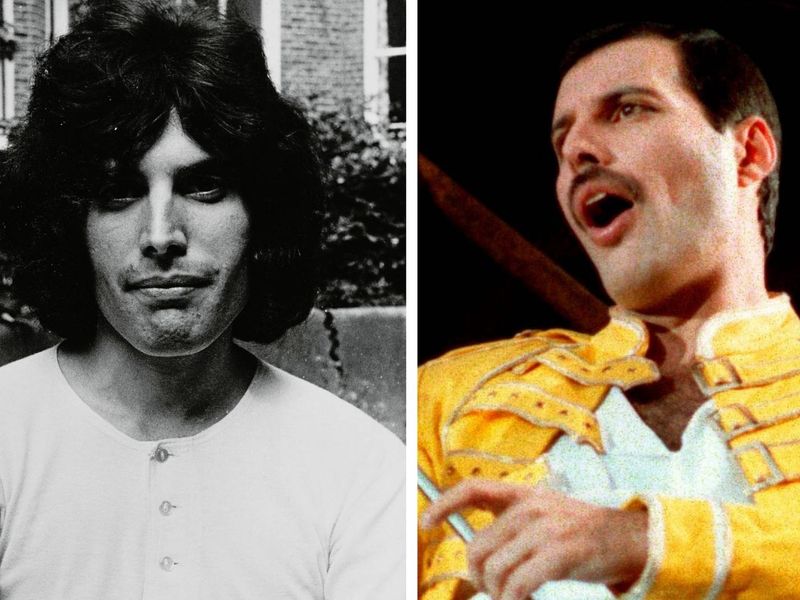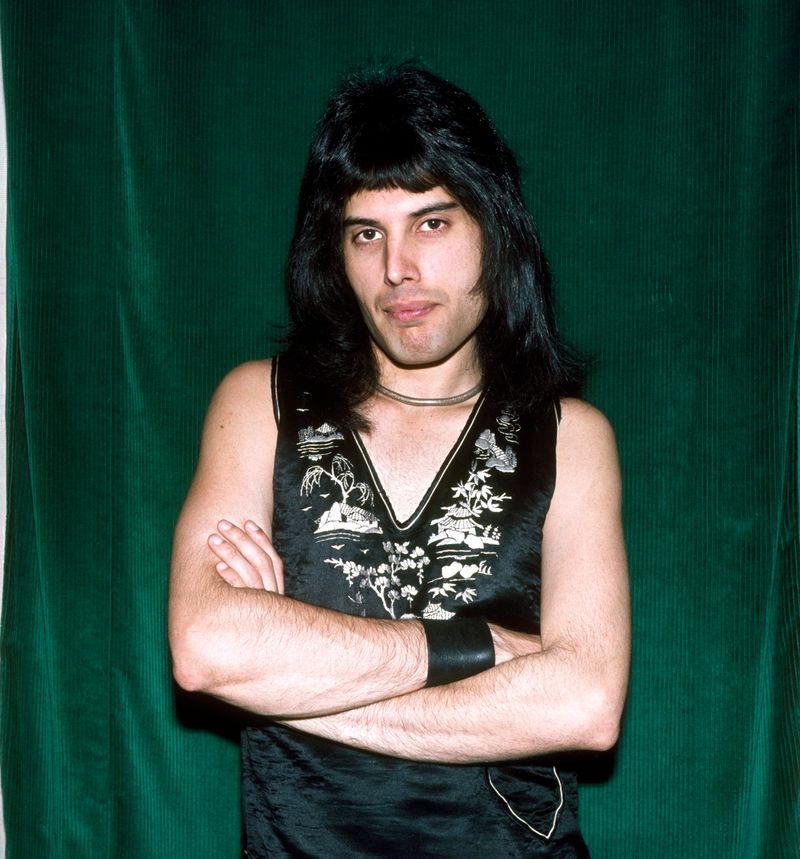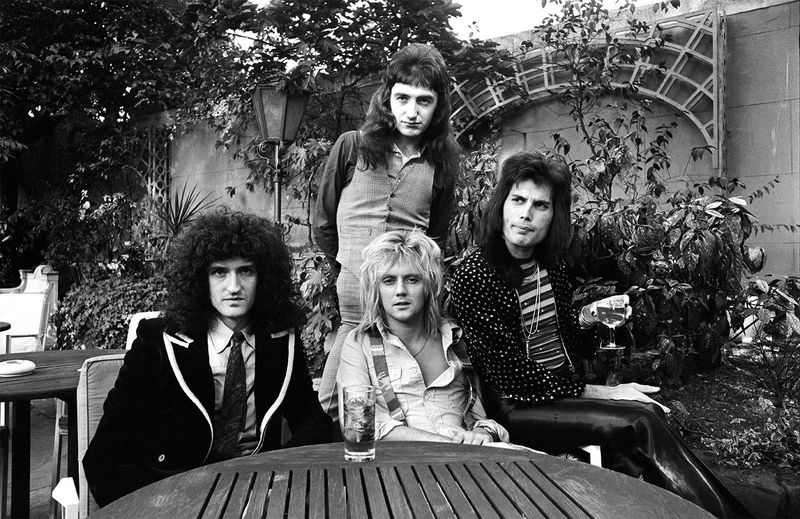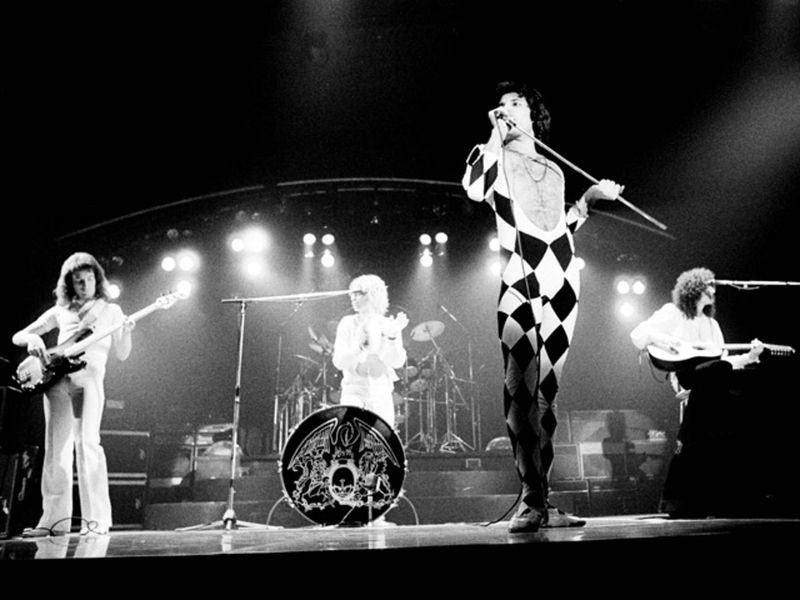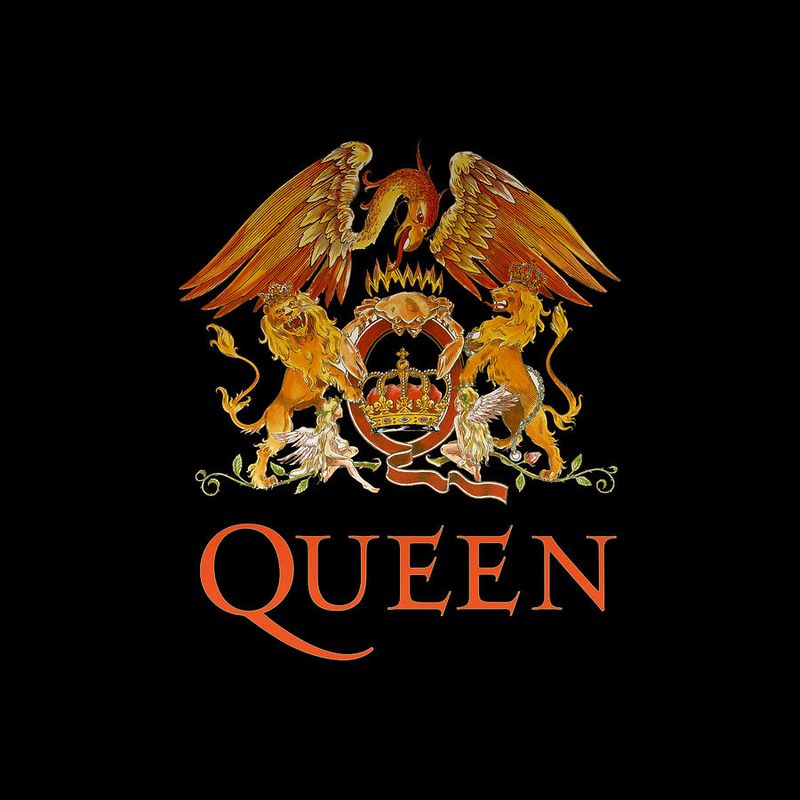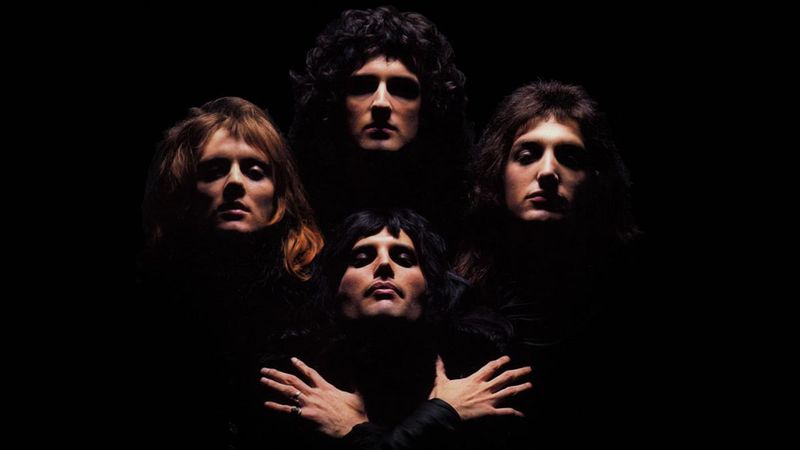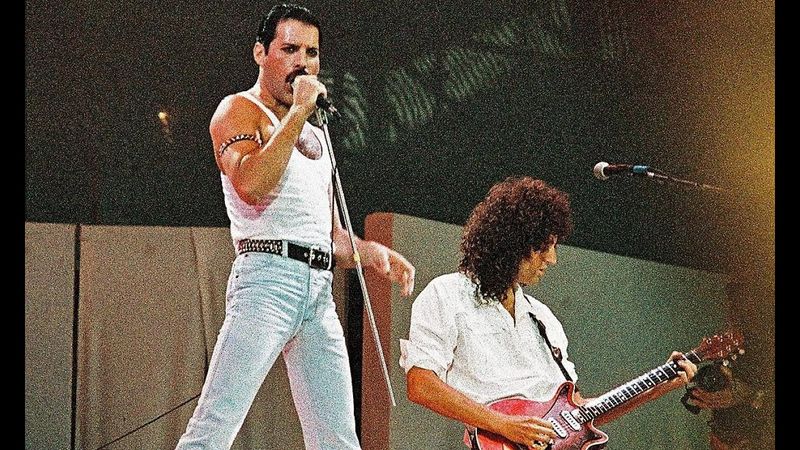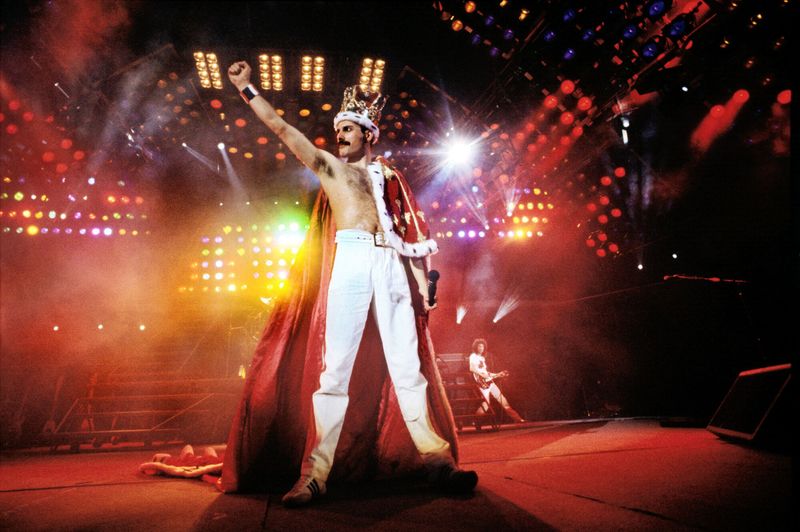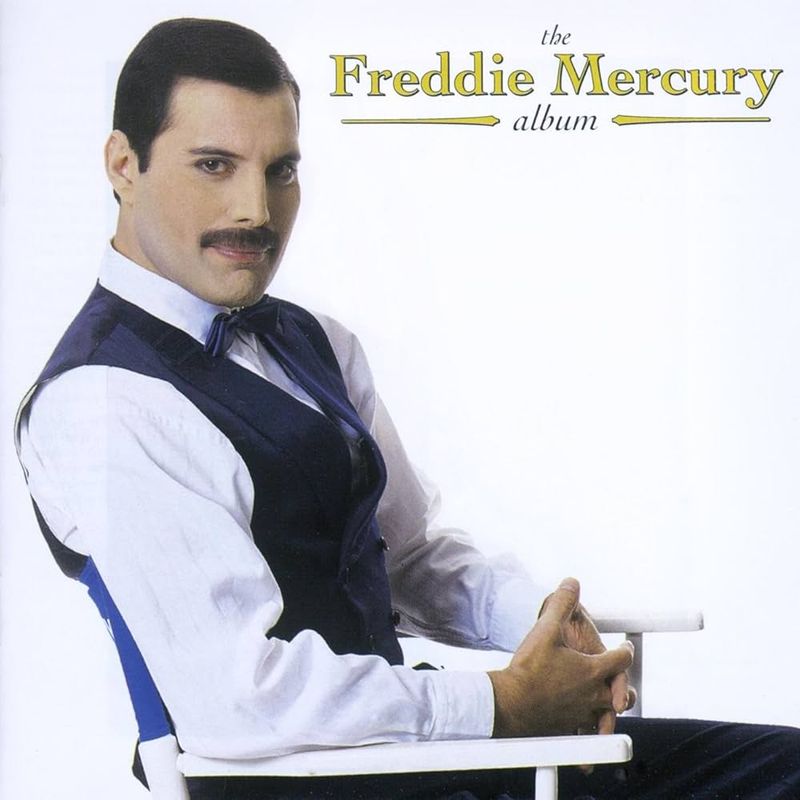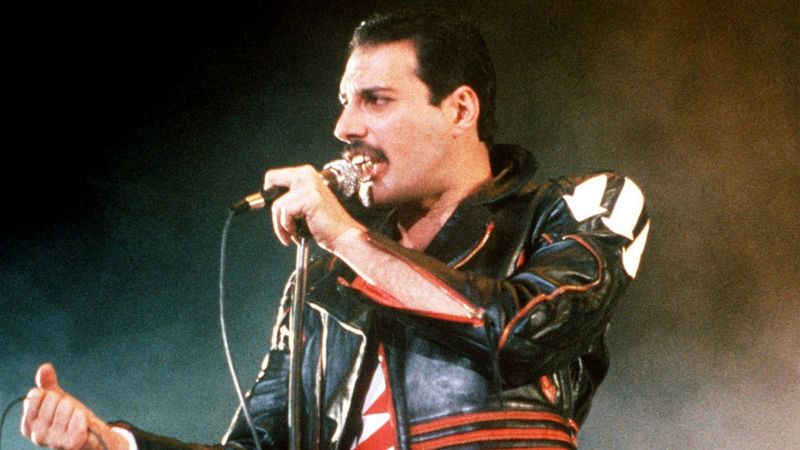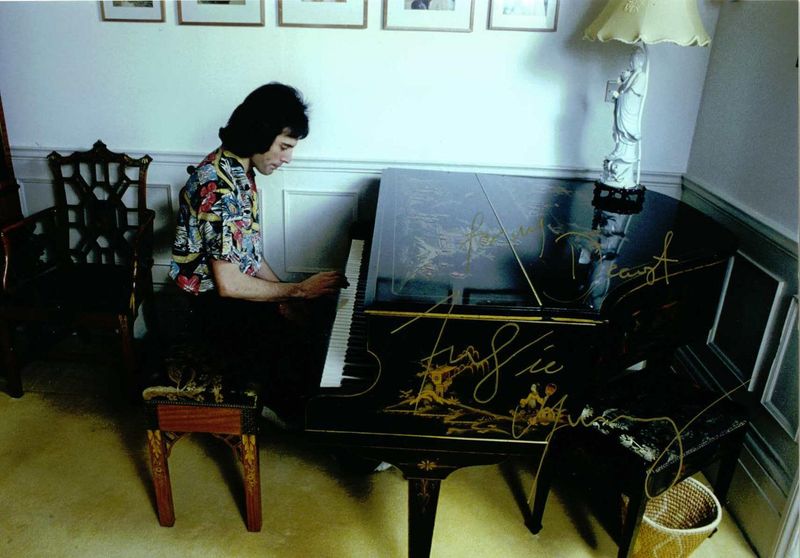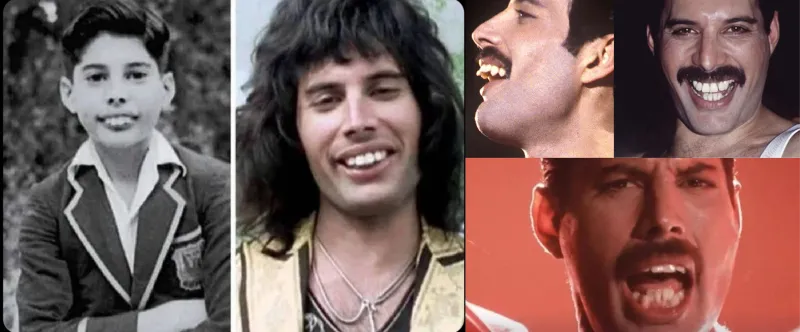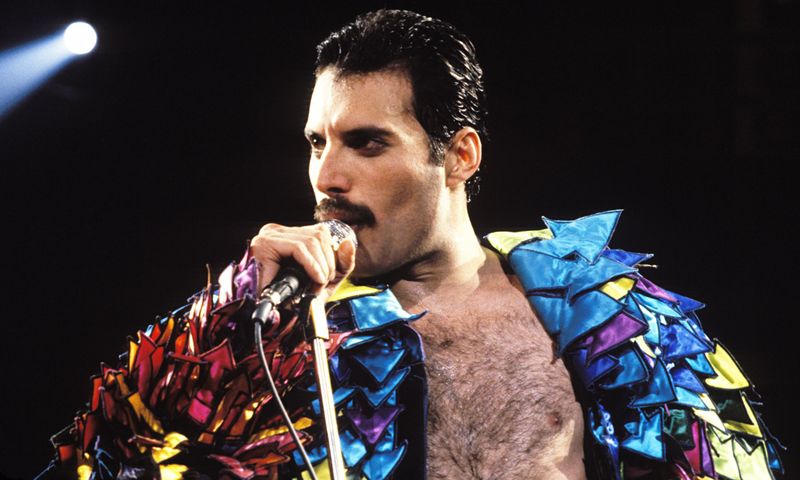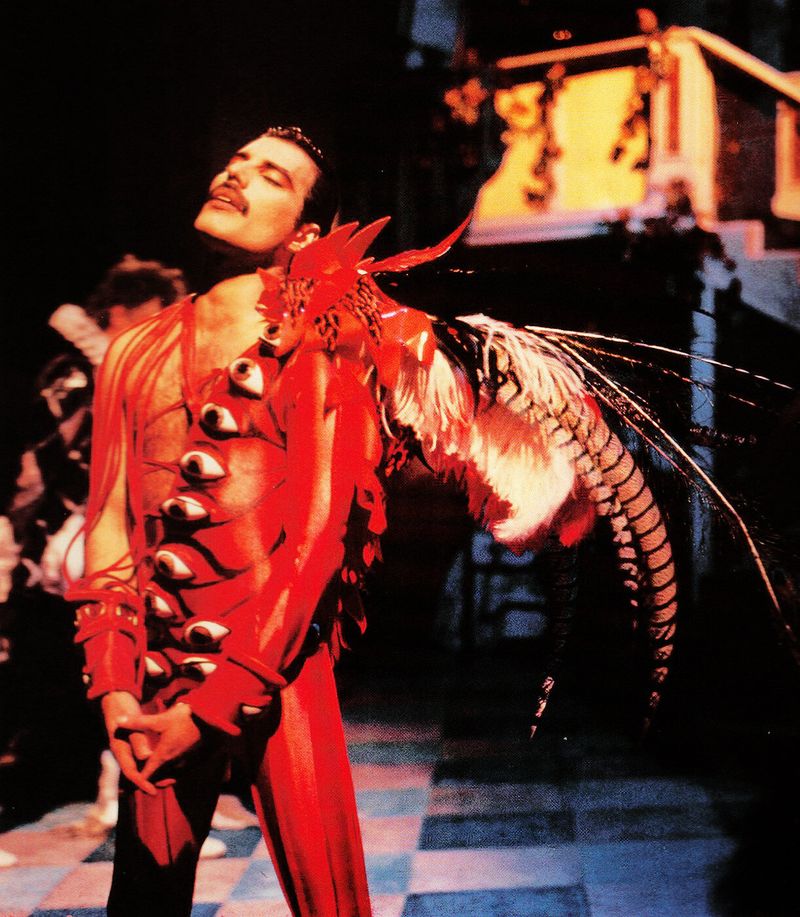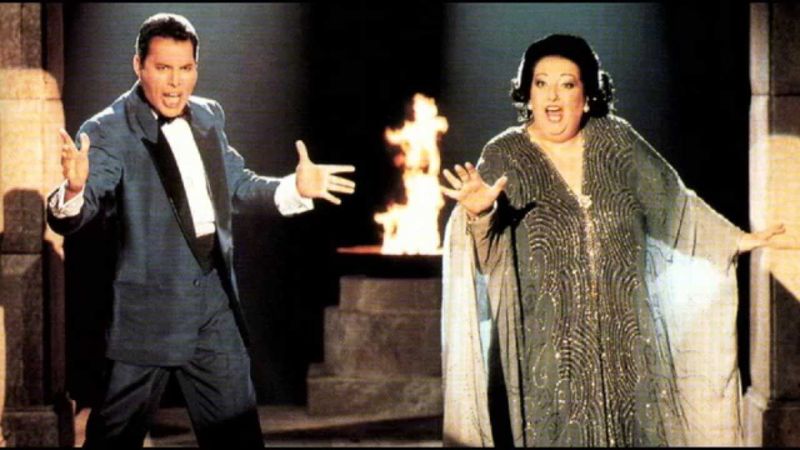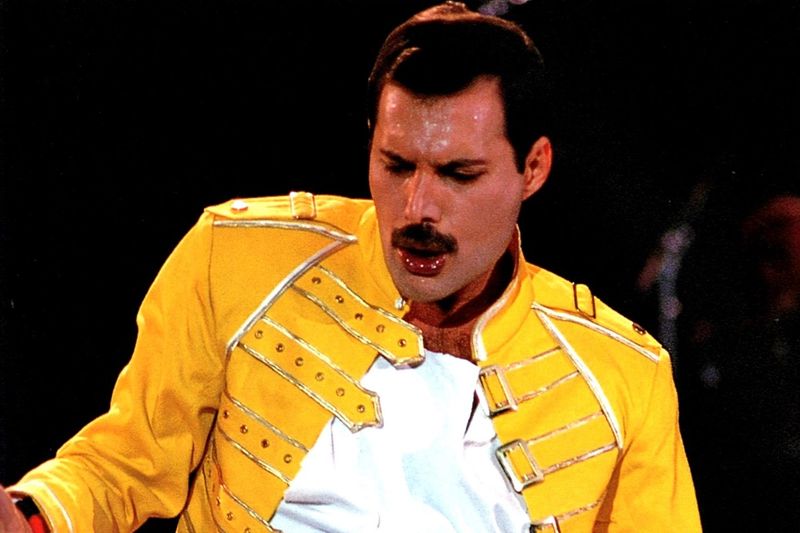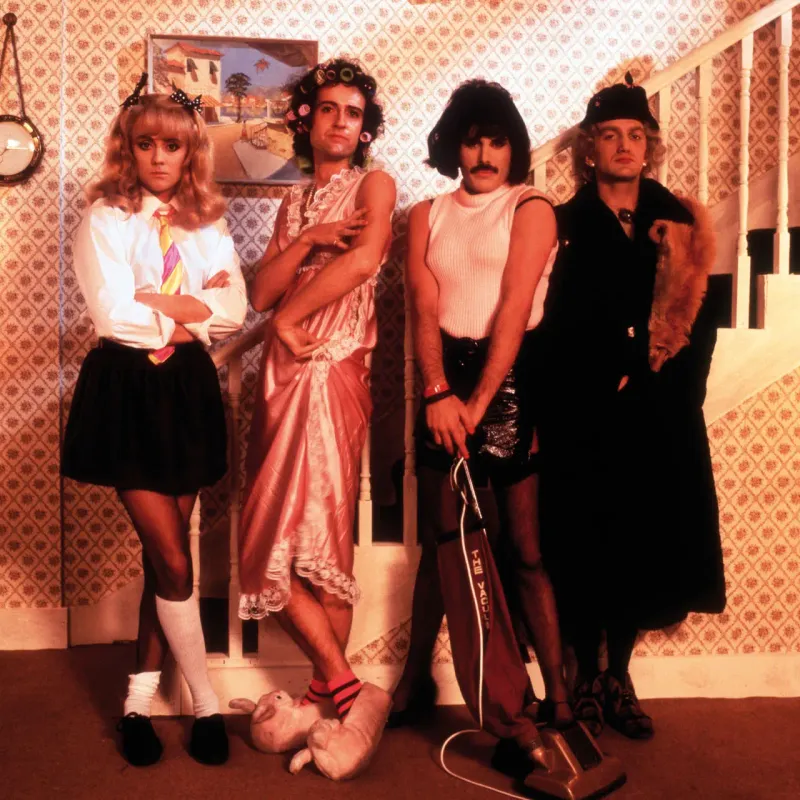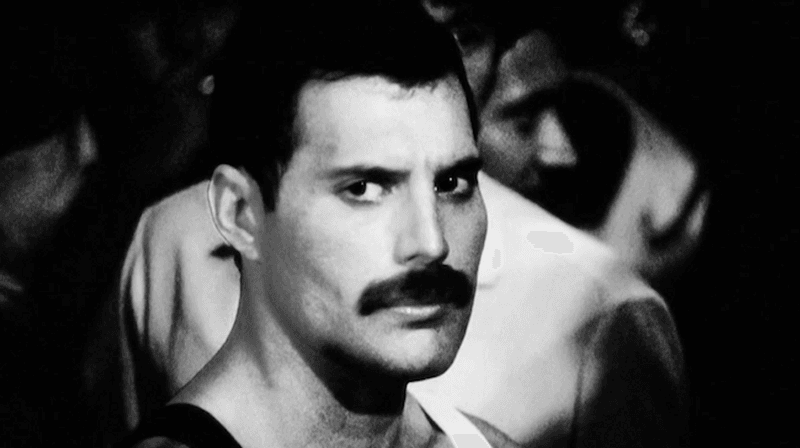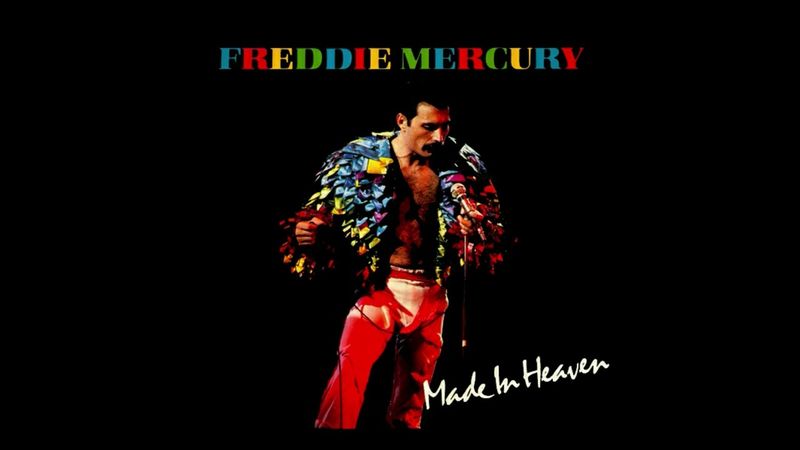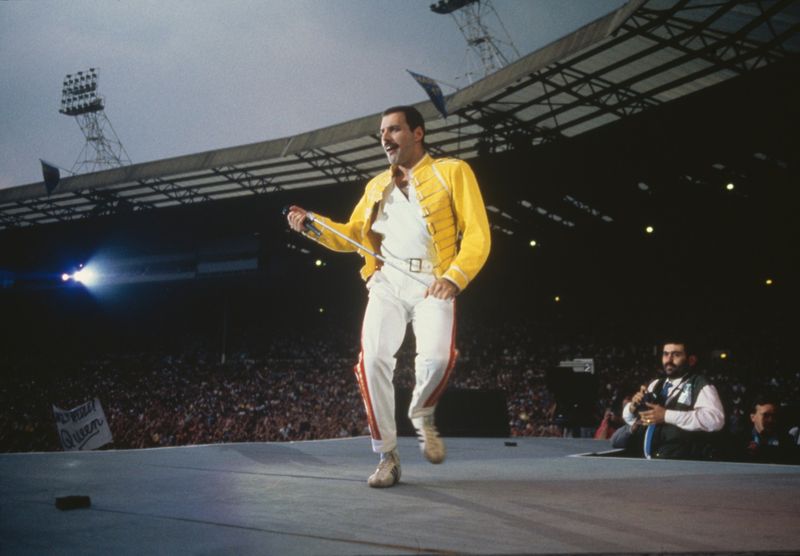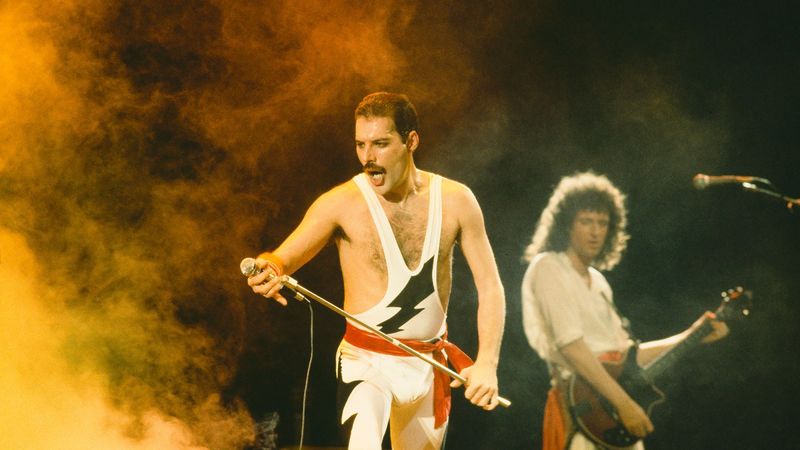Freddie Mercury, the legendary frontman of Queen, remains one of the most iconic figures in music history.
Known for his flamboyant stage presence and incredible vocal range, Mercury’s life was filled with fascinating stories and achievements that continue to captivate fans worldwide.
Here, we explore 26 intriguing facts about Freddie Mercury that might surprise even the most dedicated fans.
1. Birthplace of a Legend
Freddie Mercury was born Farrokh Bulsara on September 5, 1946, in Stone Town, Zanzibar. His early years in the vibrant island city were influenced by its diverse culture and rich history.
His parents, Bomi and Jer Bulsara, were Parsi, and they hailed from India. This multicultural environment played a significant role in shaping Mercury’s unique perspective on life.
When he was around eight years old, he moved to India for his education. At age 17, his family fled to England due to political unrest in Zanzibar. These formative experiences undeniably influenced his artistic vision.
2. A Name to Remember
The transformation from Farrokh Bulsara to Freddie Mercury was emblematic of his journey to stardom. He adopted the stage name ‘Freddie’ during his school years in India, a name easier for his peers to pronounce.
The surname ‘Mercury’ was his own creation, inspired by a line in the song he wrote, “My Fairy King,” which mentioned “Mother Mercury.” This change was more than cosmetic; it was a declaration of his identity and persona.
Embracing his new identity, he embodied the persona of Freddie Mercury, the flamboyant and fearless performer.
3. Artistic Beginnings
Before music took center stage in his life, Freddie Mercury had a profound interest in art and design. Attending Isleworth Polytechnic in West London, he pursued studies in art, eventually earning a diploma in Art and Graphic Design from Ealing Art College.
This background in visual arts was reflected in his music, stage performances, and even in designing the Queen emblem. His artistic flair was evident in the elaborate stage costumes and album covers that became synonymous with Queen’s image.
Mercury’s talent was not confined to one medium; he used multiple avenues to express his creativity.
4. The Birth of Queen
The band Queen was born out of Mercury’s collaboration with guitarist Brian May and drummer Roger Taylor. In the late 1960s, Mercury joined their band, Smile, and soon suggested the new name, Queen.
He believed the name was regal, universal, and had a hint of intrigue, reflecting the band’s image. The addition of bassist John Deacon completed the lineup. Together, they created a unique blend of musical styles, from rock and opera to pop and classic.
Mercury’s theatrical flair and vocal prowess became central to Queen’s identity. The band quickly rose to fame, captivating audiences worldwide.
5. A Vocal Powerhouse
Freddie Mercury’s vocal range was nothing short of extraordinary, spanning four octaves. Known for his powerful and dynamic voice, he could effortlessly switch between rock anthems and delicate ballads.
His ability to convey emotion through his singing was unparalleled, making every performance a unique experience. Mercury’s operatic style and charismatic stage presence were key elements in Queen’s success.
His voice was not just an instrument; it was an extension of his personality, allowing him to connect deeply with fans. Critics and fellow musicians have consistently lauded his vocal talent, cementing his legacy as a true vocal powerhouse.
6. The Queen Emblem
The iconic Queen emblem, designed by Freddie Mercury himself, is a testament to his artistic skills.
Drawing inspiration from the zodiac signs of the band members, the emblem features a blend of astrological symbols: two lions for Leo (Roger Taylor and John Deacon), a crab for Cancer (Brian May), and fairies for Virgo (Mercury). Encircled by a phoenix, the emblem exudes a sense of unity and mystique.
This emblem not only represents the band but also symbolizes Mercury’s ability to blend art with music. His creative vision was instrumental in crafting the distinctive identity of Queen.
7. Bohemian Rhapsody
“Bohemian Rhapsody,” one of Queen’s most iconic songs, was a brainchild of Freddie Mercury. Released in 1975, the song defied conventional pop structures, blending rock, opera, and ballad elements into a single composition.
Mercury’s innovative approach and meticulous attention to detail resulted in a song that still resonates with listeners today. The lyrics, often regarded as enigmatic, continue to provoke analysis and interpretation.
This six-minute masterpiece showcased Mercury’s extraordinary talent as a songwriter and performer. Its success established Queen as pioneers in the music industry, pushing the boundaries of what a rock band could achieve.
8. The Iconic Live Aid Performance
Freddie Mercury’s performance at Live Aid in 1985 is often hailed as one of the greatest rock performances in history. With his charisma and energy, he captivated the audience at Wembley Stadium and millions watching worldwide.
Mercury led the crowd in a mesmerizing call-and-response, demonstrating his command over the stage and ability to engage with fans on a massive scale.
This performance not only revived Queen’s popularity but also solidified Mercury’s status as an unparalleled showman. His ability to connect with people through music remains a defining moment in rock history, showcasing his exceptional talent and stage presence.
9. A Passion for Cats
Freddie Mercury’s love for cats was well-known, and he considered them part of his family. Over the years, he adopted numerous cats, each with their own unique personalities.
His devotion to his feline companions was evident in his personal life, often talking to them on the phone while on tour. Mercury’s connection with his cats extended to his music, with songs like “Delilah” dedicated to one of his beloved pets.
His passion for these animals provided him with comfort and companionship, reflecting his softer, more nurturing side. Cats were more than pets to Mercury; they were cherished members of his life.
10. Cultural Icon
Freddie Mercury transcended music to become a cultural icon known for his flamboyance and groundbreaking artistry. His unique style, characterized by theatrical performances and extravagant fashion, challenged traditional norms and inspired countless artists.
Mercury’s fearless embrace of his identity paved the way for greater acceptance and visibility within the LGBT community. Through his music and persona, he became a symbol of freedom and self-expression.
His influence extends beyond the music industry, impacting fashion, art, and pop culture. Mercury’s legacy as a cultural icon continues to resonate, inspiring future generations to embrace their individuality and creativity.
11. Mercury’s Solo Career
While Freddie Mercury is most renowned for his work with Queen, his solo career also showcased his remarkable versatility as an artist. In the mid-1980s, he released albums like “Mr. Bad Guy” and collaborated with opera singer Montserrat Caballé on “Barcelona.”
These projects allowed Mercury to explore different musical styles and express his creativity in new ways. His solo work highlighted his ability to blend genres, from pop to opera, and demonstrated his willingness to take artistic risks.
Though not as commercially successful as Queen, his solo endeavors added depth to his artistic legacy, revealing his multifaceted talent.
12. A Tragic Loss
Freddie Mercury’s untimely death on November 24, 1991, marked a profound loss for the music world. Succumbing to complications from AIDS, his passing brought attention to the disease, fostering greater awareness and advocacy.
Despite his illness, Mercury continued to create music until his final days, leaving behind a legacy of resilience and artistry. His willingness to keep his battle private allowed him to focus on his work and personal relationships.
Mercury’s death is a reminder of the impact one individual can have on the world, as his music and memory continue to inspire and uplift fans globally.
13. The Mercury Phoenix Trust
In honor of Freddie Mercury’s memory, his bandmates and friends established The Mercury Phoenix Trust to fight HIV/AIDS worldwide.
Since its inception in 1992, the charity has funded numerous projects and initiatives aimed at education, prevention, and support for those affected by the disease. The trust embodies Mercury’s spirit of giving and continues to make a positive impact in the global fight against AIDS.
Through fundraising events and collaborations, the charity has reached countless individuals, carrying forward Mercury’s legacy of compassion and philanthropy. The Mercury Phoenix Trust stands as a testament to his enduring influence and commitment to making a difference.
14. Freddie’s Love for Opera
Freddie Mercury had a profound love for opera, a passion that influenced his music and collaborations. His admiration for opera singers like Montserrat Caballé led to their groundbreaking collaboration on the album “Barcelona.”
This project fused rock and opera, showcasing Mercury’s ability to blend different musical genres. His operatic influences were also evident in Queen’s music, with songs like “Bohemian Rhapsody” reflecting grand, theatrical elements.
Mercury’s appreciation for opera added depth to his artistic vision, allowing him to create music that transcended traditional boundaries. His passion for this timeless art form continues to inspire those who seek to innovate in music.
15. His Legendary Teeth
Freddie Mercury’s distinctive teeth, often referred to as his ‘overbite,’ became an iconic part of his image. The result of having four extra incisors, this unique feature contributed to his powerful vocal range.
Despite suggestions to alter his appearance, Mercury chose to embrace his distinctive smile, believing it enhanced his singing. His confidence in his natural appearance became a symbol of self-acceptance and individuality.
Mercury’s teeth, once a source of self-consciousness, became an endearing trait that fans admired. This decision to remain true to himself reflects his broader philosophy of authenticity and unapologetic self-expression.
16. The Unique Stage Persona
Freddie Mercury’s stage persona was an electrifying blend of charisma, theatricality, and spontaneity. Known for his flamboyant costumes and dynamic performances, he captivated audiences with his larger-than-life presence.
Each concert became a theatrical spectacle, with Mercury commanding the stage with unmatched energy and flair. His ability to connect with fans and create an immersive experience was unparalleled.
Mercury’s persona was not merely an act; it was an authentic expression of his love for music and performance. His influence can be seen in countless artists who strive to emulate his commitment to putting on a truly unforgettable show.
17. A Hidden Talent
In addition to his musical talent, Freddie Mercury had a knack for fashion design. Known for his bold and innovative stage outfits, Mercury often collaborated with designers to bring his vision to life.
His unique style challenged conventional norms, blending glamour, androgyny, and theatricality. Off stage, he enjoyed sketching costume ideas and exploring different textures and fabrics.
This hidden talent added another layer to his artistic persona, reflecting his passion for creativity and self-expression. Mercury’s fashion sense became an integral part of his identity, influencing not only his performances but also broader fashion trends.
18. The Power of Collaboration
Freddie Mercury’s collaboration with opera singer Montserrat Caballé on the album “Barcelona” showcased his ability to blend different musical genres.
Released in 1988, this project was a bold fusion of rock and opera, reflecting Mercury’s innovative spirit. His willingness to explore new artistic avenues demonstrated his commitment to pushing boundaries and taking risks.
The title track became an anthem for the 1992 Summer Olympics in Barcelona, further cementing its significance in music history.
Mercury’s work with Caballé exemplifies the power of collaboration, highlighting how artists from diverse backgrounds can create something truly unique and groundbreaking.
19. The Iconic Yellow Jacket
The iconic yellow jacket worn by Freddie Mercury during Queen’s 1986 Magic Tour became a symbol of his flamboyant style and stage presence. Designed by Diana Moseley, the military-inspired jacket featured bold buckles and epaulettes.
This distinctive outfit reflected Mercury’s love for theatrical fashion and became synonymous with his performances. The yellow jacket was more than a costume; it embodied Mercury’s larger-than-life persona and confidence.
Fans worldwide still associate the jacket with his unforgettable concerts, where his charisma and energy captivated audiences. This iconic outfit remains a lasting symbol of Mercury’s unique blend of music, fashion, and performance artistry.
20. A Love for Art
Freddie Mercury had a deep appreciation for art, a passion that influenced his music and aesthetics. Known for his love of painting and collecting artwork, he surrounded himself with creative inspiration.
His artistic sensibilities extended beyond music, impacting his approach to album design, stage sets, and fashion. Mercury’s ability to blend visual and auditory elements created a multisensory experience for fans, enhancing the impact of his performances.
His connection to art reflected his broader philosophy of creativity and innovation. Mercury’s love for art continues to inspire those who seek to explore the intersections of different artistic disciplines.
21. The Pioneering Music Videos
Freddie Mercury’s innovative approach to music videos played a pivotal role in defining Queen’s visual identity. Embracing the emerging medium, he collaborated with directors to create groundbreaking videos like “Bohemian Rhapsody” and “I Want to Break Free.”
These visual masterpieces combined storytelling, theatricality, and cutting-edge technology, setting new standards in the industry. Mercury’s vision for music videos extended the reach of Queen’s music, allowing fans to engage with their work on a deeper level.
His pioneering efforts demonstrated the potential of music videos as an art form, influencing the way artists approach visual storytelling today.
22. The Lasting Legacy
Freddie Mercury’s legacy extends far beyond his music, as he continues to inspire generations with his creativity, courage, and compassion. Through his groundbreaking artistry, he challenged norms and paved the way for greater acceptance and diversity in the music industry.
His fearless embrace of his identity resonates with fans and artists alike, encouraging them to pursue their passions and stay true to themselves.
Mercury’s influence can be seen in countless tributes, from murals and statues to covers of his timeless songs. His enduring impact is a testament to his unparalleled talent and the universal appeal of his music.
23. The Unfinished Swan Song
Freddie Mercury’s final album with Queen, “Made in Heaven,” was released posthumously in 1995, showcasing his dedication to music until the very end. Recorded during his last years, the album features tracks that reflect his thoughts on life, love, and legacy.
Despite his declining health, Mercury’s passion for creating music remained steadfast, inspiring his bandmates to complete the project after his passing.
“Made in Heaven” serves as a poignant reminder of his talent and determination, offering fans a glimpse into his final artistic expressions. This swan song continues to resonate, embodying Mercury’s enduring spirit and artistic vision.
24. The Legendary Wembley Concert
Freddie Mercury’s performance at Wembley Stadium in 1986 is remembered as one of Queen’s most iconic concerts. This historic event captured the band’s dynamic energy and Mercury’s unparalleled showmanship.
His connection with the audience was electric, as he led them through a setlist of classic hits with charisma and flair. The concert, later immortalized in the “Queen at Wembley” album and video, showcased Mercury’s ability to transform a live performance into a communal celebration.
Fans still cherish this legendary concert, which epitomizes the magic and excitement of a Queen live show, highlighting Mercury’s unique ability to captivate and inspire.
25. The Iconic Moustache
Freddie Mercury’s iconic moustache became a defining aspect of his image during the 1980s. Initially met with mixed reactions, it soon became a symbol of his evolving style and persona.
The moustache complemented his bold fashion choices and added to his charismatic presence on stage. Mercury’s decision to embrace this distinctive look demonstrated his confidence in his individuality and willingness to defy trends.
Fans came to associate the moustache with his vibrant personality and enduring legacy. Today, it remains an iconic symbol of Freddie Mercury, reflecting his influence on both music and popular culture.
26. Freddie’s Enduring Influence
Freddie Mercury’s influence on the music world continues to resonate, inspiring countless artists across genres. His unique blend of rock, opera, and pop set new standards for musical innovation and creativity.
Mercury’s fearless embrace of his identity broke barriers, encouraging other musicians to explore their artistic boundaries. His legacy of authenticity and self-expression remains a guiding light for those who seek to create meaningful and impactful music.
From emerging artists to established icons, Mercury’s impact can be seen in performances, fashion, and music that echo his groundbreaking vision. His enduring influence is a testament to his unparalleled talent and artistry.
